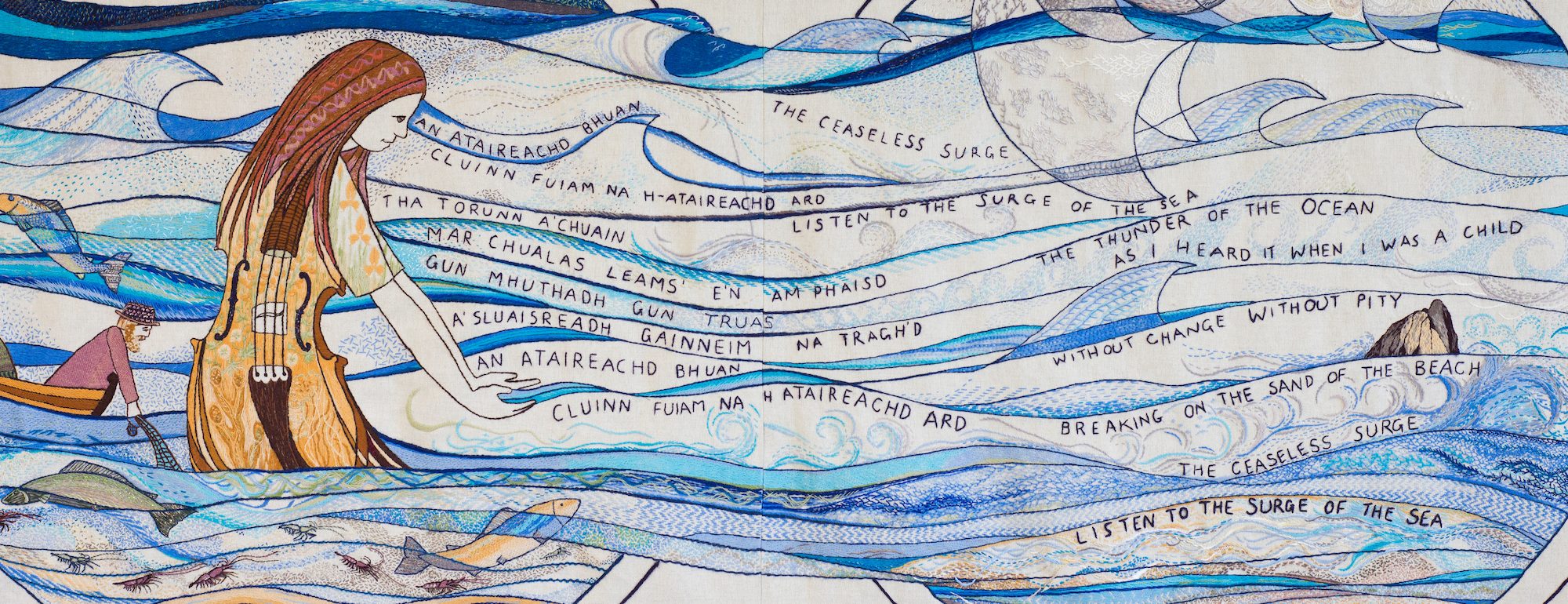
Great Tapestry of Scotland to make Scotland’s history accessible to all
UPDATE 8 September 2022:
Our deepest sympathy goes to The Royal Family on the death of Her Majesty Queen Elizabeth II. As a mark of respect, we are now postponing our Great Tapestry Gala. We apologise for any disappointment this may cause, but a public celebration is just not appropriate at this sad time. We hope to rearrange at a more suitable date. We greatly value your support and understanding at this sad historical moment.
The new national Great Tapestry of Scotland gallery (opening in 2021) has revealed its aim to make the nation’s history, heritage and culture more accessible to all through “wonderfully visual” storytelling. It also hopes to help address the findings of new research, which suggests that many people in Scotland (including those who said they know “a lot” about Scotland’s history) have limited knowledge of some key moments in Scotland’s past.
The research conducted by YouGov on behalf of The Great Tapestry of Scotland gallery and exhibition space in Galashiels, also illustrates that 71% of all those surveyed agree they are more likely to remember an event from history if they have seen an image depicting it. More details below.
Revealing the research findings Sandy Maxwell-Forbes, Centre Director for The Great Tapestry of Scotland added: “Our YouGov research suggests that many people in Scotland are unaware of some significant moments in Scottish history that feature in The Great Tapestry of Scotland. It also provides evidence that the Tapestry’s engaging and memorable images could play a key role in helping to address this. Indeed, many of those who have seen The Great Tapestry of Scotland tell us they were incredibly moved by its wonderfully visual account of the people’s story of Scotland. Some have said that they learned more about our nation’s history, heritage and culture from the Tapestry than anywhere else.
“Through a range of visual, tactile and digital displays, tours and workshops, our new accessible national gallery and exhibition space will truly build on this and take visitors from around the globe on a real journey of discovery as they learn about some of the key moments that have shaped our world and guide our future.”
Professor Murray Pittock, Bradley Professor and Pro Vice Principal at the University of Glasgow, who is currently writing The Global History of Scotland for Yale said: “Our history defines us as individuals and as a nation – it gives us a sense of who we are and where we came from. Understanding our past gives us confidence in our ability to shape the future, to acknowledge mistakes and makes the best of opportunities, moving us forward as a progressive society. Scotland’s history shaped and was shaped by the world, and visitors globally love the Scottish past. Unfortunately, there is a low awareness of Scottish history in Scotland generally. Evidence shows that visual imagery can really help people of all abilities to learn more. Museums and galleries and projects like The Great Tapestry of Scotland, that really take the time to bring history to life through images and engaging displays, can play a central role in addressing this.”
The Tapestry’s latest survey conducted by YouGov was representative of all adults in Scotland (age 18+). It asked people how much they thought they knew about Scottish history and then tested them on some significant historical moments. It showed that:
- 43% of all those surveyed, and 40% of those who said they knew “a lot” about Scottish history, thought that King Macbeth was a fictional character from a Shakespeare play (Macbeth was King of Scots from 1040 until his death).
- 87% of all those surveyed, and 74% of those who said they knew “a lot” about Scottish history, did not know that the Scottish novelist Sir Walter Scott rediscovered Scotland’s crown jewels (They were rediscovered by a search party led by Sir Walter Scott on 4 February 1818).
- More than half of adults in Scotland (52%) did not know that members of the same family fought against each other at Culloden. (There are a number of reports of members of the same family fighting against each other at the Battle of Culloden. There was even a man fighting for the Duke of Cumberland who fought against his own dad who was a Jacobite.)
- 68% of all those surveyed, and 47% of those who said they knew “a lot” about Scottish history, didn’t know that Scottish Doctor Elsie Inglis was a pioneering surgeon in the late 19th and early 20th centuries. (Dr Elsie Inglis was an innovative Scottish doctor, pioneering surgeon, suffragist, founder of the Scottish Women’s Hospitals and the first woman to hold the Order of the White Eagle, the highest honour given by Serbia.)
- 30% of all those surveyed, and 37% of those who said they knew “a lot” about Scottish history, believed that Scotland got its own parliament after the 1979 devolution referendum. (It wasn’t until 1998, after the 1997 devolution that the UK Government passed the Scotland Act which established the Scottish Parliament. The Parliament then opened in 1999s.)
- 6% of all those surveyed, and 7% of those who said they knew “a lot” about Scottish history, thought Jamie Fraser, immortalised in the TV series Outlander, was a real Scottish clan chief. (Though the character of Jamie Fraser was loosely based on a real Jacobite soldier who survived the Battle of Culloden, he is fictional.)
Each of the true facts behind all of these statements feature within The Great Tapestry of Scotland’s 160 panels, each telling different stories of Scotland.
Explaining how the Tapestry could help people to get a better knowledge of some historical Scottish facts, lead stitcher Dorie Wilkie said: “The Great Tapestry of Scotland provides a wonderful way for people of all ages to discover or be reminded about Scotland’s history, heritage and culture. There are different layers of interest for everyone to enjoy while visiting the tapestry. Guided by initial drawings of the core moments in history by Andrew Crummy, the stitchers added more images based on their own research, and in many cases from their local knowledge.
“As well as Scotland’s history to enjoy, there are added points of interest stitched around the panels, and finally for embroiderers the many examples of exciting stitching creating lovely textures. We all learnt so much about our history and the experience of working on the tapestry as a large community. We still we see something new every time we visit it.”
The Great Tapestry of Scotland, hand stitched by a team of 1,000 stitchers led by Dorie, tells the visual story of Scotland’s history, heritage and culture from its formation to present day. It was the vision of one of the world’s best loved writers Alexander McCall-Smith, designed by artist Andrew Crummy and teams of stitchers around Scotland from a narrative written by the award-winning writer and historian Alistair Moffat. It is made up of 300 miles of wool (enough to lay the entire length of Scotland from the border with England to the tip of the Shetland in the North Atlantic).
The new national Great Tapestry of Scotland gallery and exhibition space, purpose built to house the tapestry, has received over £6.7 million funding from the Scottish Government Regeneration Capital Grant Fund, the Borders Railway Blueprint programme and Scottish Borders Council. It will open in Galashiels in the Scottish Borders, one of the UK’s leading textile regions, in 2021. The cultural venture is operated by the charity Live Borders, which also manages many of the cultural and leisure facilities in the Borders, including the five star Jim Clark Motorsport Museum.
In addition to housing the Tapestry itself, the building will host a range of visiting exhibits, tours and workshops. The first temporary exhibit will be Iconic Scotland, which will feature written and photographic contributions from 40 iconic, inspiring and pioneering individuals including Outlander Stars Sam Heughan and Grant O’Rourke, actress Joanna Lumley, sports star Doddie Weir and brewing pioneer Sir Geoff Palmer.
For more information about the new visitor attraction visit www.liveborders.org.uk/gtos or follow @GreatTapestrySc on Facebook or Twitter, and @GreatTapestryScotland on Instagram.
Live Borders is a charity. Every penny you spend with us is reinvested into supporting active, creative and healthy communities in the Scottish Borders.
Share

